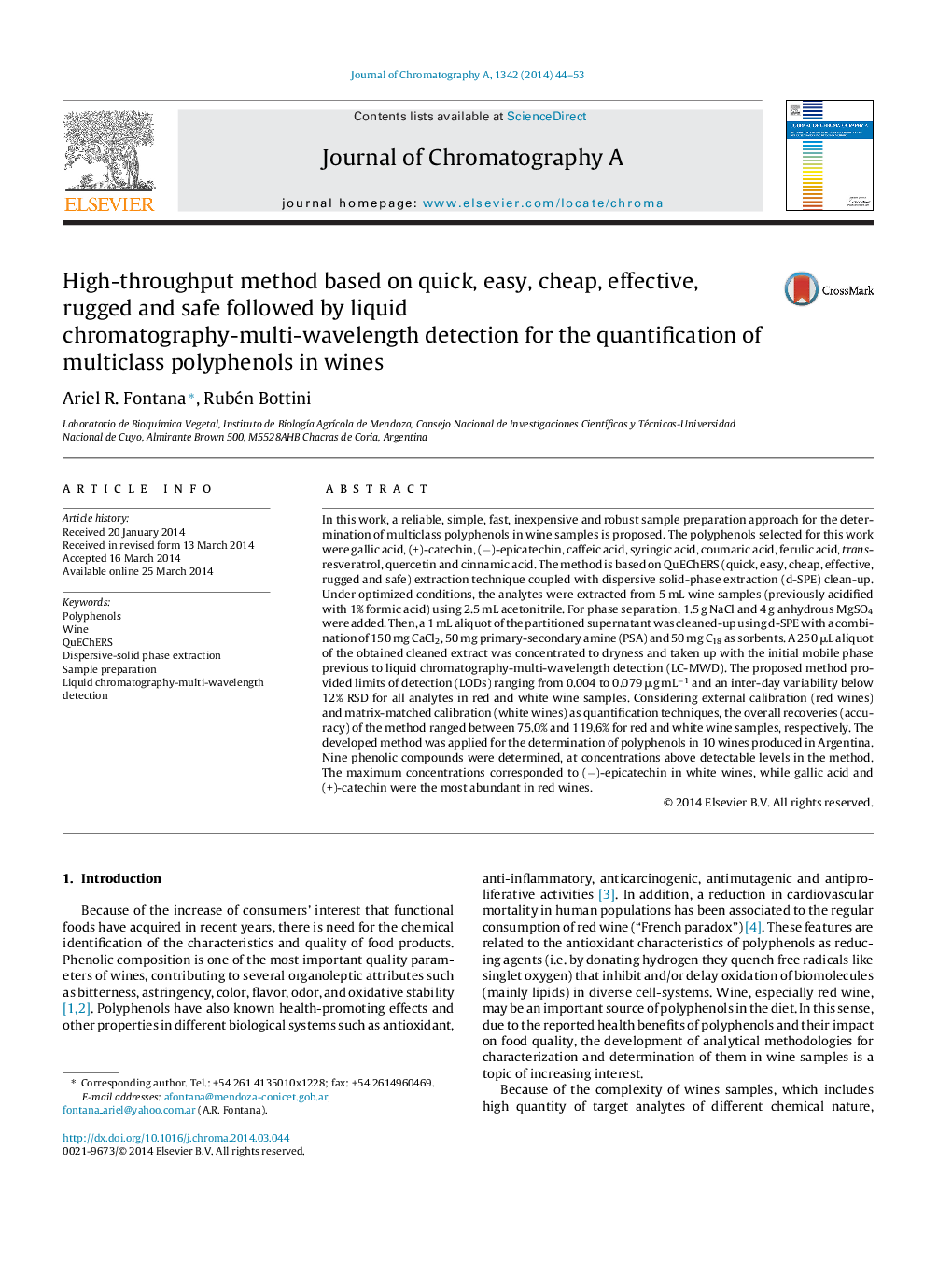| Article ID | Journal | Published Year | Pages | File Type |
|---|---|---|---|---|
| 1203219 | Journal of Chromatography A | 2014 | 10 Pages |
•A QuEChERS method for polyphenols determination in wines was developed.•d-SPE clean-up was effective to avoid sample matrix effects.•Satisfactory precision (RSD ≤12%) and accuracy (R% 75.0–119.6) were achieved.•High-throughput and sensitivity closer to the most laboratories.•QuEChERS-LC-MWD looks to be a suitable strategy for phenolic characterization purposes.
In this work, a reliable, simple, fast, inexpensive and robust sample preparation approach for the determination of multiclass polyphenols in wine samples is proposed. The polyphenols selected for this work were gallic acid, (+)-catechin, (−)-epicatechin, caffeic acid, syringic acid, coumaric acid, ferulic acid, trans-resveratrol, quercetin and cinnamic acid. The method is based on QuEChERS (quick, easy, cheap, effective, rugged and safe) extraction technique coupled with dispersive solid-phase extraction (d-SPE) clean-up. Under optimized conditions, the analytes were extracted from 5 mL wine samples (previously acidified with 1% formic acid) using 2.5 mL acetonitrile. For phase separation, 1.5 g NaCl and 4 g anhydrous MgSO4 were added. Then, a 1 mL aliquot of the partitioned supernatant was cleaned-up using d-SPE with a combination of 150 mg CaCl2, 50 mg primary-secondary amine (PSA) and 50 mg C18 as sorbents. A 250 μL aliquot of the obtained cleaned extract was concentrated to dryness and taken up with the initial mobile phase previous to liquid chromatography-multi-wavelength detection (LC-MWD). The proposed method provided limits of detection (LODs) ranging from 0.004 to 0.079 μg mL−1 and an inter-day variability below 12% RSD for all analytes in red and white wine samples. Considering external calibration (red wines) and matrix-matched calibration (white wines) as quantification techniques, the overall recoveries (accuracy) of the method ranged between 75.0% and 119.6% for red and white wine samples, respectively. The developed method was applied for the determination of polyphenols in 10 wines produced in Argentina. Nine phenolic compounds were determined, at concentrations above detectable levels in the method. The maximum concentrations corresponded to (−)-epicatechin in white wines, while gallic acid and (+)-catechin were the most abundant in red wines.
